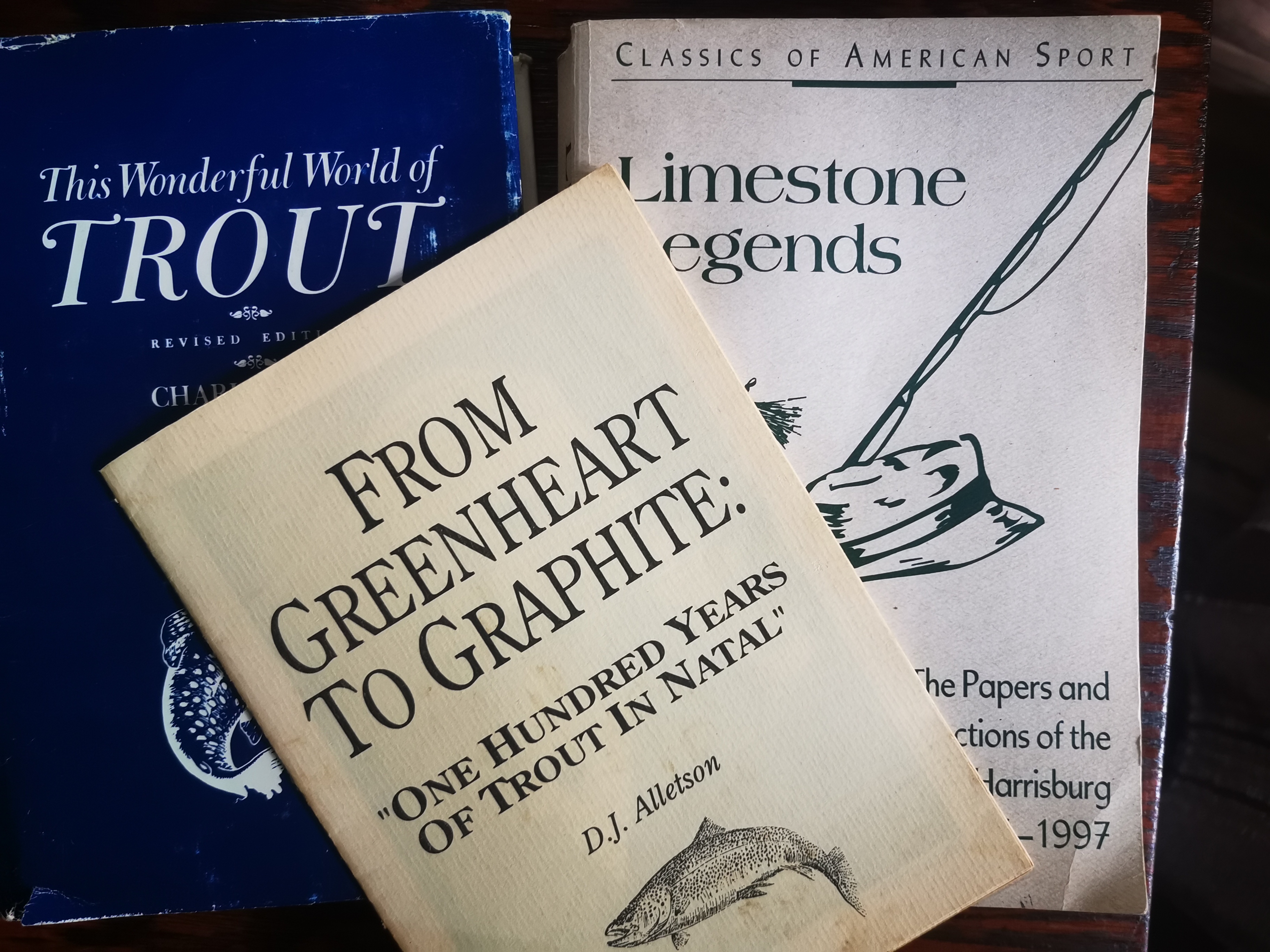
The movers: Loch Leven Trout in the Letort and the uMngeni
Exploring Frog water on the Letort and the uMngeni, a Trout migration theory.
Home » Trout breeding & stocking

Exploring Frog water on the Letort and the uMngeni, a Trout migration theory.
“……..in the old days anyone with a bucket or a milk can could get a load of fingerling trout and put then wherever he wanted to, and that the first plantings done by the Division of Wildlife itself weren’t much more scientific than that. The result on the one hand was that a lot of already depleted native cutthroat fisheries were destroyed altogether by the introduction of brown, rainbow and brook trout. On the other hand, some thriving fisheries were established where before there had been no fish at all. You can apply revisionist criticism to all that if you
The South African department of environmental affairs is about to see to it that broccoli ceases to find its way onto dinner plates in South Africa, by listing it as invasive and requiring a permit to do anything with it. Dammit! I like my broccoli! What is it with them! Broccoli is tasty. It is only grown in small areas. It doesn’t harm anyone, and millions of us like it. Hell, some people are passionate about it. They say not to worry and that we will be able to get permits. I don’t trust them. Broccoli, it seems, are guilty
As fishermen, we can sometimes look down on people who count their fish. There are those who take a little toggle counter pinned to their vest, and ratchet up numbers long after dark while everyone else is around the braai fire. (Not my type!) Then there’s the guy who says “oh …I got enough of them to make me happy”. (Bloody irritating! …but I think I have said stuff like that before) I have to count my fish. If I didn’t, what would I write in my logbook? I know…I don’t have to have a logbook. But I do have
I am going to make a giant assumption, that having read part 1 of this story , you are in agreement with me that bass are a problem in the Trout areas here in KZN , and that something needs to be done about them. If you haven’t already agreed with the above, then you probably won’t be reading this anyway. The biggest issue here, is that nobody knows how bass spread. There are however some theories. I will list those here, and then alongside each theory, suggest an appropriate measure to stop the spread. Theory no 1: Bass eggs
Because Trout and bass are being labeled as “alien invasive” by authorities in South Africa, they are together on the same side of the battle lines. That is perhaps the reason that little is being said by Trout fishermen about the bass problem. But a more likely reason is apathy, or some other failure on the part of us fly-fishermen to galvanise into action. I say that, because the unwanted, unchecked spread of bass in the uplands of KZN has been going on for thirty years. Those, by the way, are 30 years in which Trout have not “invaded”
As a youngster, I was conditioned to hate Indian Mynah birds. They were an alien species, made a horrible noise and were often seen chasing other birds away from food. I once witnessed the neighbouring farmer’s wife shooting an Indian Mynah through the sash window , from well within the master bedroom, with a 12 gauge shotgun! KABOOM! I was not yet a teenager. That’s got to leave an impression! But then I noticed the bird appeared in the Roberts Bird book. That was puzzling, because it is not indigenous. And then Mynah bird’s range appeared to retract a bit,
Even my patience was waning, but I am happy to tell you that the limited edition, hard cover version of my book arrived yesterday. To those who have already pre-ordered: Thank you for your support. Your books will be making their way to you by courier, personal delivery, or whatever else you requested or arranged. Those who would like to buy a limited edition book, or a soft cover second edition, which will be available within days…..….please click on the “Book launch” tab at the top of this page and follow the ordering instructions there. I am very pleased with
To read about the book, or to order a copy click here. Visit the Facebook page